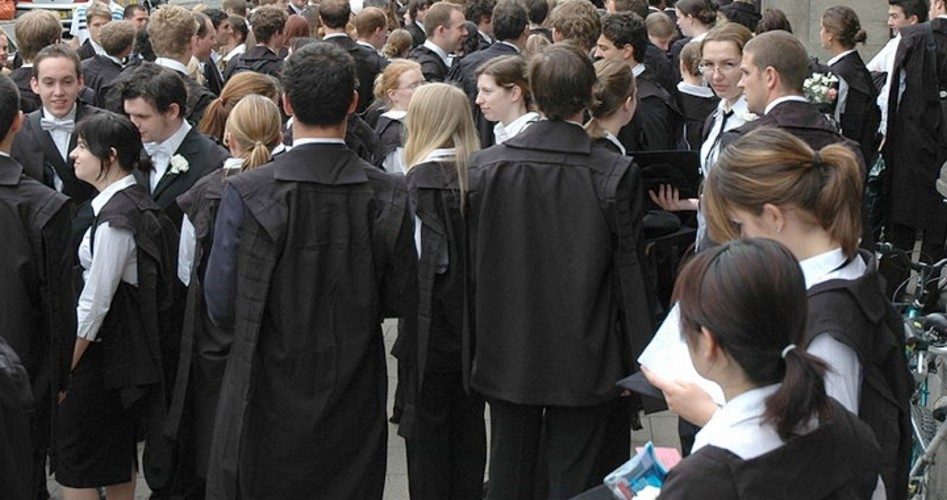
Oxford University, which for centuries has set one of the strictest trends for academic propriety, announced that it is doing away with its staid formal academic dress code in favor of one that is more sensitive to transvestites and other “transgender” individuals.
The UK’s Guardian newspaper reported that the nearly 1,000-year-old institution had decided to scrap its longtime code for traditional academic attire — called “subfusc” — “which required male students to wear a dark suit and socks, black shoes, a white bow tie and a plain white shirt and collar under their black gowns,” explained the Guardian, while women were to wear “a dark skirt or trousers, a white blouse, black stockings and shoes and a black ribbon tied in a bow at the neck.”
The revised code, which went into effect in early August, will allow students taking exams or attending formal university functions to dress according to whatever gender they identify with on a particular day. In practice the new policy means that “men will be able to sit tests in skirts and stockings and women will have the option of wearing suits and bow ties,” reported the Guardian.
The bizarre change was the result of a motion forwarded to Oxford’s student union by the university’s Lesbian, Gay, Bisexual, Trans and Queer Society (LGBTQSoc). According to the group’s head, Jess Pumphrey, the change will make school exams go better for the university’s transvestites and other sexually confused students. “In future there will be no need for transgender students to cross-dress to avoid being confronted by invigilators or disciplined during their exam,” Pumphrey told the Oxford Student newspaper.
The student newspaper quoted a spokesman for Oxford University as saying that the dress code had been changed “to remove any reference to gender, in response to concerns raised by Oxford University Student Union that the existing regulations did not serve the interests of transgender students.”
Simone Webb, another leader of the university’s LGBTQSoc, called the move “an extremely positive step, and indeed long overdue. I am of the opinion that it is possible to keep elements of tradition in this way while making them unrestrictive to trans students, genderqueer students, or students who wish to wear a different subfusc to that which they’d be expected to wear.”
Under the old Oxford dress policy, while it was possible for a transvestite or other “transgender” individual to wear something other than the uniform approved for his or her gender, the student would need special approval from the university for the change.
Surprisingly, there appeared to be little complaint about the change from the university’s student body or faculty. One unnamed student did offer that the change “seems a bit unnecessary. It only applies to a tiny percentage of the student population and it seems unlikely that a trans student would really be confronted about what they are wearing.”
One former student, Ann Widdecombe, who graduated from Oxford’s Lady Margaret Hall in 1972, seemed somewhat more disgusted with the move, telling the UK’s Daily Mail that “if men want to prance around in skirts, that is entirely up to them. In my day, it would have been unthinkable — men were men and women were women, and we dressed accordingly.”
Photo of Oxford University students in subfusc.



